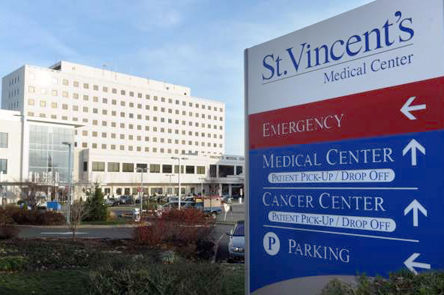As a subsidy that would give billions of dollars to nuclear power plants upstate is set to kick in, the plan is facing scrutiny by some in the state Legislature and has been challenged twice in court.
The plan, backed by Gov. Andrew Cuomo, offers a subsidy to keep three upstate nuclear energy plants running. The state”™s six investor-owned utilities would be required to buy so-called zero-emission credits, which would help fund the operations of the plants.
The plan has been challenged in the courts twice and now is being questioned by members of Cuomo”™s own party, Democrats in the Assembly.
In its 2017-18 budget proposal, Assembly Democrats proposed blocking the nuclear subsidy program until representatives from the New York State Energy Research and Development Authority and state Public Services Commission appear before the lawmakers to answer questions about the subsidy.
Assembly members were reportedly angered when representatives from NYSERDA and the PSC declined to attend legislative hearings on the bailout in March. The state”™s top energy officials blamed late notice and scheduling conflicts for missing the hearings.
In a press conference on March 22, Assembly Energy Committee Chair Amy Paulin, D-Scarsdale, questioned the transparency of the state PSC in approving the subsidy.
“We support keeping the nuclear plants open,” Paulin said, as reported by USA Today”™s Albany bureau. “But to do that, we need to understand how the PSC arrived at the decisions they made.”
Then there are the legal challenges. The first comes from a group of plaintiffs that includes five energy producers and two trade groups, including national energy producers Dynegy Inc. and NRG Energy Inc.
The lawsuit, filed in federal court in October, argues that the state is illegally impeding on the federal government”™s ability to regulate energy prices.
A month later, environmental group Hudson River Sloop Clearwater filed its own challenge in state Supreme Court against the subsidy, which it said “would bring about one of the largest transfers of wealth from the rate paying public to a single corporate entity in New York state history.”
All three nuclear plants helped by the subsidy are owned or will be owned by a single company, Chicago-based Exelon Corp. Since the subsidy was announced, one of the plants, James A. FitzPatrick Nuclear Power Plant in Oswego County, has been sold by Entergy Corp. to Exelon. Exelon already owned the other two plants that qualified: Nine Mile Point, also in Oswego County, and the R.E. Ginna Nuclear Power Plant in Wayne County.
Indian Point Energy Center in Buchanan is the only nuclear plant in the state not included. Its owners, Entergy, plan to close the plant by 2021, a decision the company blamed on economic factors and an extended license renewal process.
Cuomo has argued that nuclear power should act as an emissions-free bridge to a future focused more on renewable energy. The loss of the state”™s nuclear plants, he argues, could lead to an increase in carbon emissions of more than 31 million metric tons during the next two years. The plants have struggled to compete with cheap natural-gas generation.
The subsidy is part of Cuomo”™s Clean Energy Standard, which was approved by the state Public Service Commission in August. The plan requires utilities and other energy suppliers to aggressively phase in renewable power sources to allow the state to receive half its electricity from those new sources by 2030.
The overall Clean Energy Standard plan did have the public support of Westchester power supplier Consolidated Edison Inc., as well as some environmental groups such as the Natural Resources Defense Council and the New York League of Conservation Voters.
Just how much the nuclear subsidy will cost is still up for debate. Estimates cited by both Clearwater and the group of plaintiffs suing the state in federal court put the total at $7.6 billion in ratepayer dollars going to the three nuclear plants over 12 years. The state”™s estimate puts it at just under $3 billion. A Bloomberg Intelligence report estimates the cost at $3.9 billion.
The state estimates the subsidy will add about $2 a month to ratepayers”™ bills. But the cost could be significantly higher for facilities with larger power needs, such as hospitals and manufacturers.
A study funded by the New York Public Interest Research Group estimated large hospital operators, such as Northwell Health, NewYork-Presbyterian Hospital and Memorial Sloan Kettering could face millions in new yearly electric charges. In Westchester, the study estimates the subsidy could cost White Plains Hospital $163,681 yearly.
“Since the Cuomo administration has kept this process largely in the dark, it’s up to us to educate the public on the tremendous hit all ratepayers are going to take,” said Blair Horner, executive director of NYPIRG. “We hope this analysis will spur lawmakers to block the plan.”
NYPIRG leads a coalition of 130 organizations opposing the subsidy, called “Stop The Cuomo Tax.” The group has compared saving nuclear power to helping “the horse-and-buggy industry while Henry Ford is rolling cars off the assembly line.”
The group has a countdown to when the subsidy program would take effect: April 1.






















